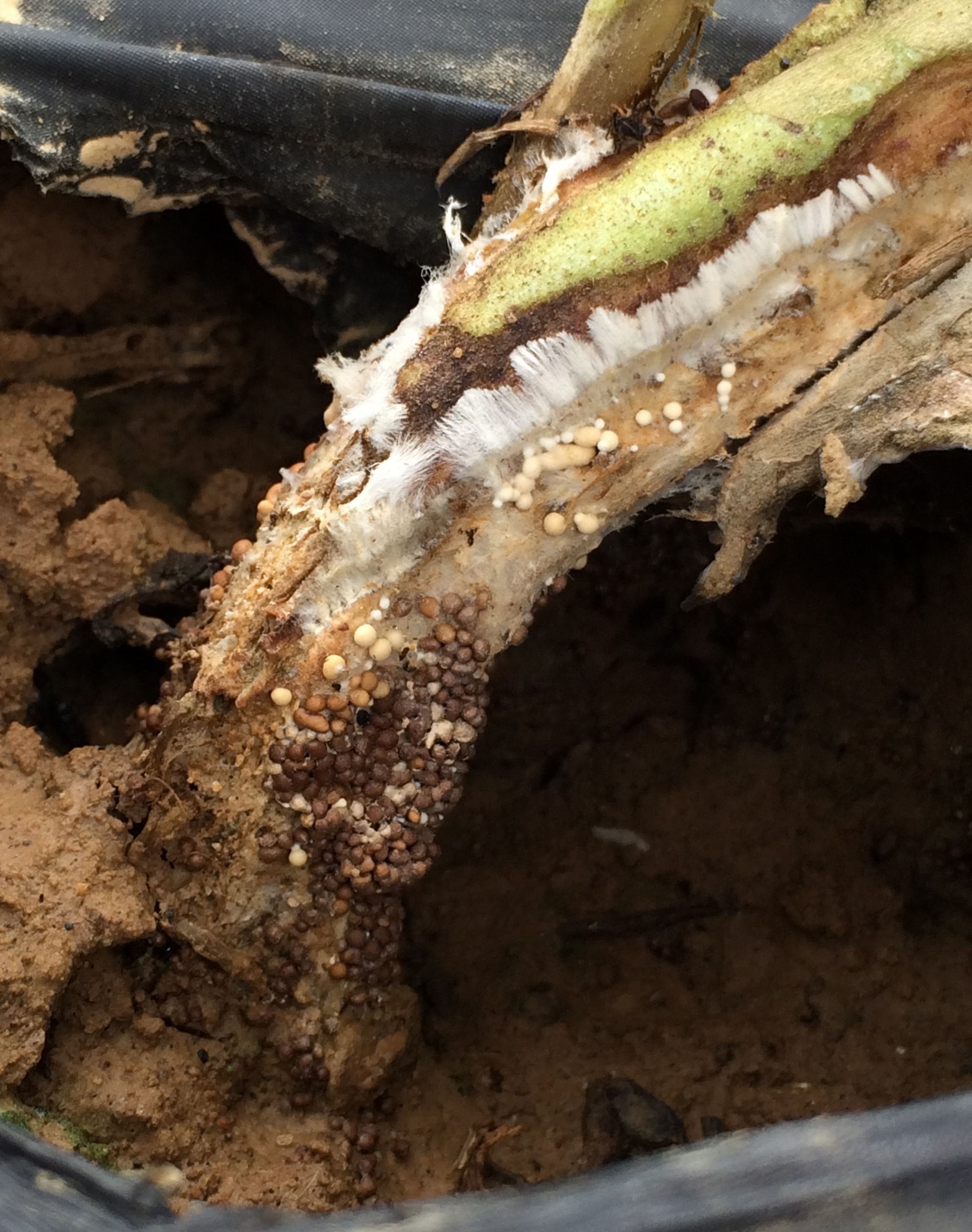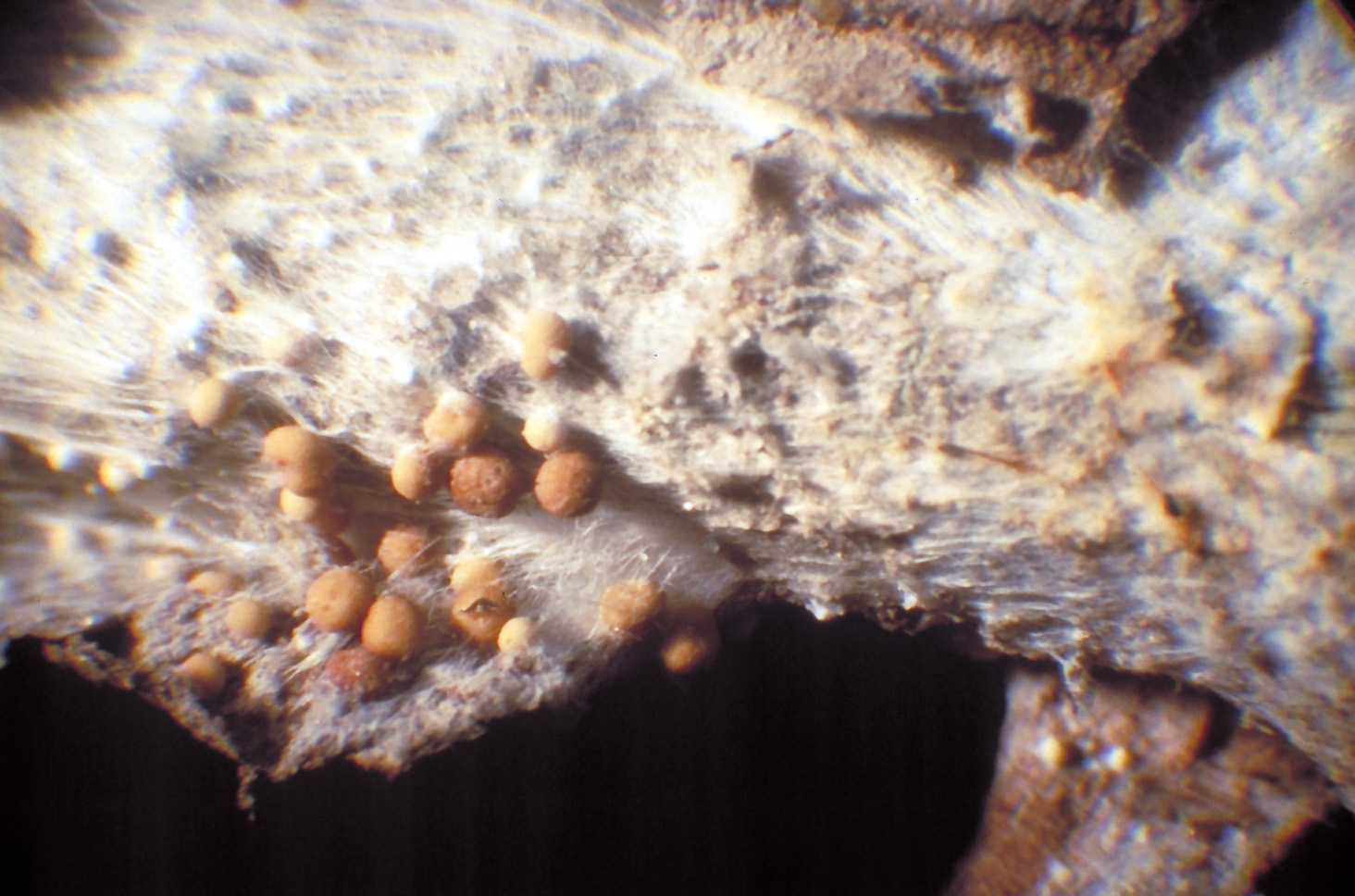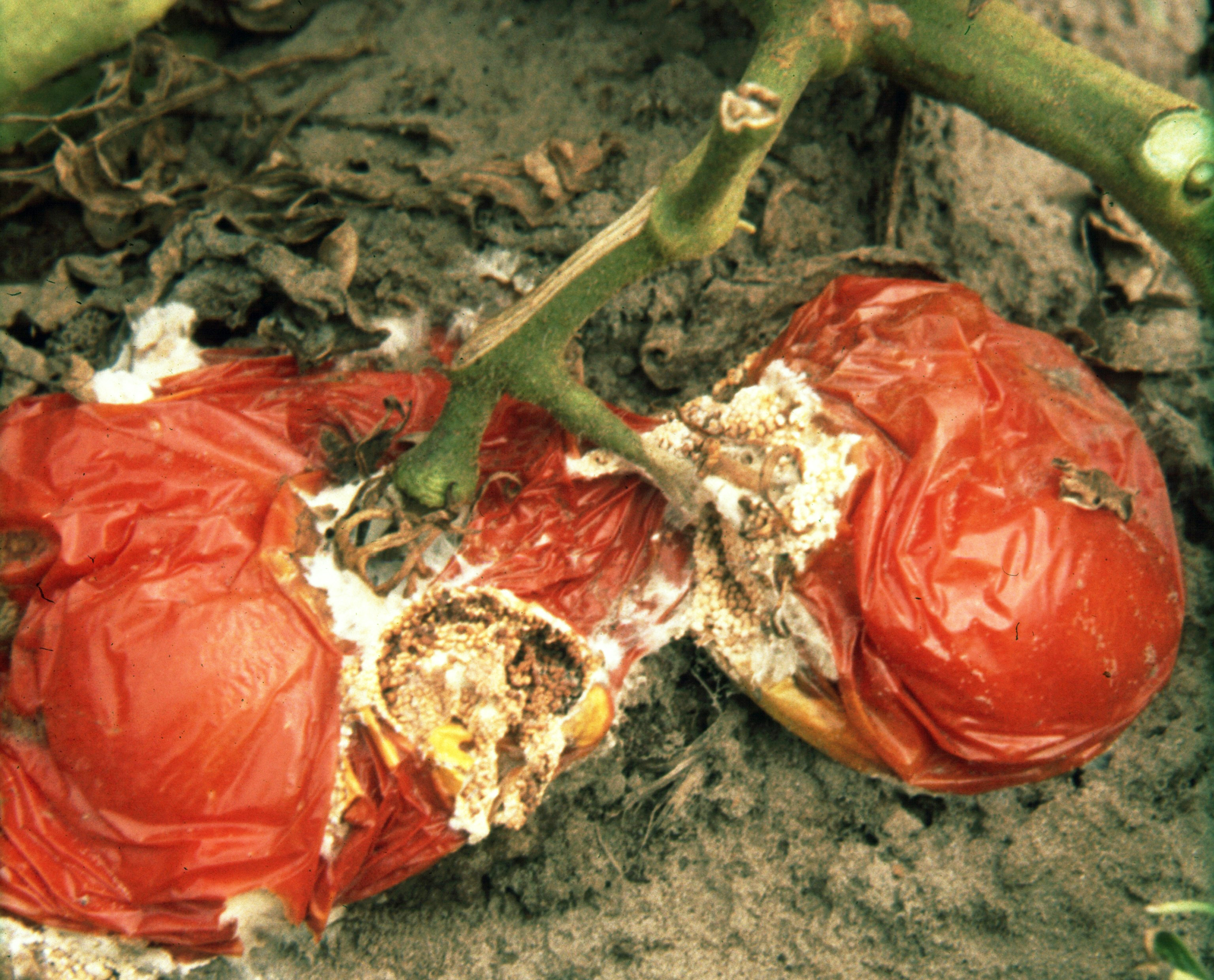Southern Blight of Tomato
Return to Diseases
Southern blight (Athelia rolfsii, syn Sclerotium rolfsii) initially results in a sudden yellowing or browning and wilting, followed by plant death. Lesions or cankers develop at the base of infected stems near the soil line, often extending up several inches aboveground. When humidity is high, a dense, white fungal growth (mycelium) may be present on affected plant parts and surrounding soil. Eventually, numerous small (1 to 2 mm in diameter), round, tan-to-reddish brown fungal survival structures (sclerotia) develop on the surface of the mycelium. Low-hanging fruit and those that touch infested soil can become infected, resulting in a wet rot and rapid decay. Disease is favored by warm, wet conditions.

Southern blight on lower stem.
(Photo: Rebecca A. Melanson, Mississippi State University Extension, Bugwood.org)

Southern blight on stem.
(Photo: Texas A&M)

Southern blight on fruit.
(Photo: USDA Cooperative Extension Slide Series, Clemson University, Bugwood.org)
Management:
- Rotate to non-host crops for at least three years if disease is severe
- Promptly remove and destroy diseased plant material
- Destroy crop residues after harvest
- Deep plow to bury residual inoculum
- Avoid movement of infested soil to clean fields
- Limited fungicides are available, and efficacy of these fungicides can be variable
